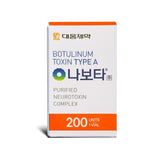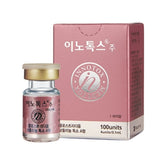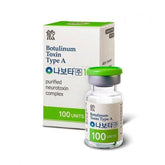DIY Numbing Creams
 DIY Numbing Creams. In the realm of pain management, numbing creams are a popular choice for those seeking relief from minor procedures and discomforts. While commercial numbing creams are widely available, some individuals prefer natural and homemade options. These DIY numbing creams can offer a gentler alternative to chemical-laden products. This blog post explores various natural and homemade numbing cream options, providing insights into their ingredients, benefits, and how to make them at home.
DIY Numbing Creams. In the realm of pain management, numbing creams are a popular choice for those seeking relief from minor procedures and discomforts. While commercial numbing creams are widely available, some individuals prefer natural and homemade options. These DIY numbing creams can offer a gentler alternative to chemical-laden products. This blog post explores various natural and homemade numbing cream options, providing insights into their ingredients, benefits, and how to make them at home.
Understanding Numbing Creams
Numbing creams, also known as topical anesthetics, work by temporarily blocking nerve signals in the skin, thereby reducing or eliminating the sensation of pain. They are commonly used for minor procedures such as tattoos, piercings, and hair removal, as well as for soothing minor skin irritations.
Benefits of DIY Numbing Creams
Opting for DIY numbing creams offers several advantages:
- Natural Ingredients: Homemade creams often use natural ingredients, reducing the risk of allergic reactions and skin irritation.
- Cost-Effective: Making your own numbing cream can be more affordable than purchasing commercial products.
- Customization: DIY options allow you to tailor the cream to your specific needs and preferences.
- Accessibility: Ingredients for homemade numbing creams are often readily available at home or can be easily purchased from local stores.
Ingredients for Homemade Numbing Creams
Several natural ingredients have numbing properties and can be used to create effective DIY numbing creams. Here are some common ingredients:
- Clove Oil
- Peppermint Oil
Peppermint oil contains menthol, which has a cooling and numbing effect on the skin. It is also known for its anti-inflammatory and analgesic properties.
- Aloe Vera
Aloe vera is widely known for its soothing and healing properties. It can help reduce pain and inflammation, making it a valuable ingredient in numbing creams.
- Coconut Oil
Coconut oil acts as a base for many homemade creams. It is moisturizing, helps to deliver active ingredients into the skin, and has mild analgesic properties.
- Witch Hazel
Witch hazel has astringent and anti-inflammatory properties, which can help soothe the skin and reduce pain.
- Chamomile
Chamomile has anti-inflammatory and calming effects, making it a useful ingredient for reducing skin irritation and discomfort.
How to Make DIY Numbing Creams
Here are a few simple recipes to make your own numbing creams at home:
Recipe 1: Clove and Peppermint Numbing Cream
Ingredients:
- 2 tablespoons coconut oil
- 5 drops clove oil
- 5 drops peppermint oil
- 1 teaspoon aloe vera gel
Instructions:
- In a small bowl, combine the coconut oil and aloe vera gel.
- Add the clove oil and peppermint oil to the mixture.
- Stir well until all ingredients are thoroughly combined.
- Apply a small amount of the cream to the affected area and massage gently.
- Leave it on for 15-20 minutes for the numbing effect to take place.
Recipe 2: Aloe Vera and Chamomile Numbing Cream
Ingredients:
- 2 tablespoons aloe vera gel
- 1 tablespoon chamomile essential oil
- 1 teaspoon coconut oil
- 1 teaspoon witch hazel
Instructions:
- Mix the aloe vera gel and coconut oil in a bowl.
- Add the chamomile essential oil and witch hazel.
- Blend the ingredients until you have a smooth consistency.
- Apply the cream to the skin and allow it to sit for 20 minutes before wiping off.
Recipe 3: Peppermint and Witch Hazel Numbing Spray
Ingredients:
- 1/2 cup witch hazel
- 10 drops peppermint oil
- 1 teaspoon aloe vera gel
- Spray bottle
Instructions:
- Combine the witch hazel and aloe vera gel in a mixing bowl.
- Add the peppermint oil and stir well.
- Pour the mixture into a spray bottle.
- Spray the affected area with the solution and let it dry naturally.
Tips for Using DIY Numbing Creams
To ensure the effectiveness and safety of your homemade numbing creams, follow these tips:
- Patch Test: Before using any DIY cream, perform a patch test on a small area of skin to check for any allergic reactions or irritation.
- Use Fresh Ingredients: Always use fresh and high-quality ingredients to maximize the benefits of your numbing cream.
- Avoid Broken Skin: Do not apply numbing creams to broken or irritated skin, as this can cause further irritation.
- Consult a Professional: If you have any concerns or underlying health conditions, consult a healthcare professional before using homemade numbing creams.
- Store Properly: Store your homemade creams in a cool, dark place to maintain their potency and shelf life.
Potential Risks and Considerations
While DIY numbing creams can be effective and safe, it's important to be aware of potential risks and considerations:
- Allergic Reactions: Some individuals may be allergic to certain essential oils or natural ingredients. Always perform a patch test first.
- Inconsistent Potency: The concentration of active ingredients in homemade creams may vary, leading to inconsistent numbing effects.
- Shorter Shelf Life: Natural and homemade products often have a shorter shelf life compared to commercial products, so use them within a reasonable time frame.
DIY numbing creams offer a natural and customizable alternative to commercial numbing products. By using ingredients such as clove oil, peppermint oil, aloe vera, and chamomile, you can create effective numbing creams at home. These creams can help manage pain and discomfort during minor procedures or soothe skin irritations. However, it is essential to use them safely, perform patch tests, and consult with a healthcare professional if needed. With the right approach, DIY numbing creams can be a valuable addition to your pain management toolkit, providing relief and comfort with the benefits of natural ingredients.





